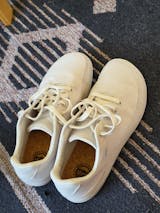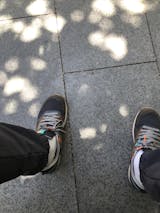Transition shoes for men easing into natural movement
New to barefoot? Our transition shoes for men are a great place to begin. Designed with just the right balance of cushioning and flexibility, they help your feet adjust gradually while encouraging better posture and natural movement.
Supportive, foot-shaped, and easy to wear, these shoes make the shift from conventional to barefoot feel smooth and steady—one step at a time.
Transition shoes for men easing into natural movement
New to barefoot? Our transition shoes for men are a great place to begin. Designed with just the right balance of cushioning and flexibility, they help your feet adjust gradually while encouraging better posture and natural movement.
Supportive, foot-shaped, and easy to wear, these shoes make the shift from conventional to barefoot feel smooth and steady—one step at a time.
Many people benefit from a stepwise approach to minimalist shoes that involves a gradual transition from a built-up conventional shoe to a transitional type of shoe to a true minimalist shoe. There are two main considerations as it concerns this stepwise approach: the sole of the foot and the Achilles tendon.
The sole of the foot is extremely sensitive (which is great for sensing the ground and making appropriate micro-adjustments during gait). But after a lifetime of wearing thick-soled shoes, the sole of the foot (skin, muscles, nerves) is not properly adapted to the ground, and being barefoot or using thin-soled shoes can be uncomfortable. The best way to build up your foot’s sole is to start with thicker-soled footwear such as the below options, and then move to thinner-soled options over time. Note that your thicker-soled footwear selection should still possess all the other foot-healthy characteristics that we recommend, specifically, a flat platform (no heel elevation, no toe spring, no arch-propping inserts), a wide toe box (widest at the ends of the toes), flexibility, and light weight.
Having worn conventional shoes with heel elevation for years (decades, in many cases), the Achilles tendon often becomes contracted, or shortened (sometimes up to three-quarters of an inch!). A shortened Achilles tendon will return to its normal length after conventional footwear is abandoned, but this process takes time. Heat, physical therapy modalities, and warming or cooling gels can help with this transition and rehabilitation. Shifting from a shoe with heel elevation to a “zero drop” shoe can place a tremendous amount of strain on your Achilles tendon, and overdoing it, especially at first, can cause damage and pain in this structure. Again, a slow, step-wise shift to transitional footwear can make the leap to ultra-minimalist shoes a much lower risk.
Read more about transitioning here






















































































